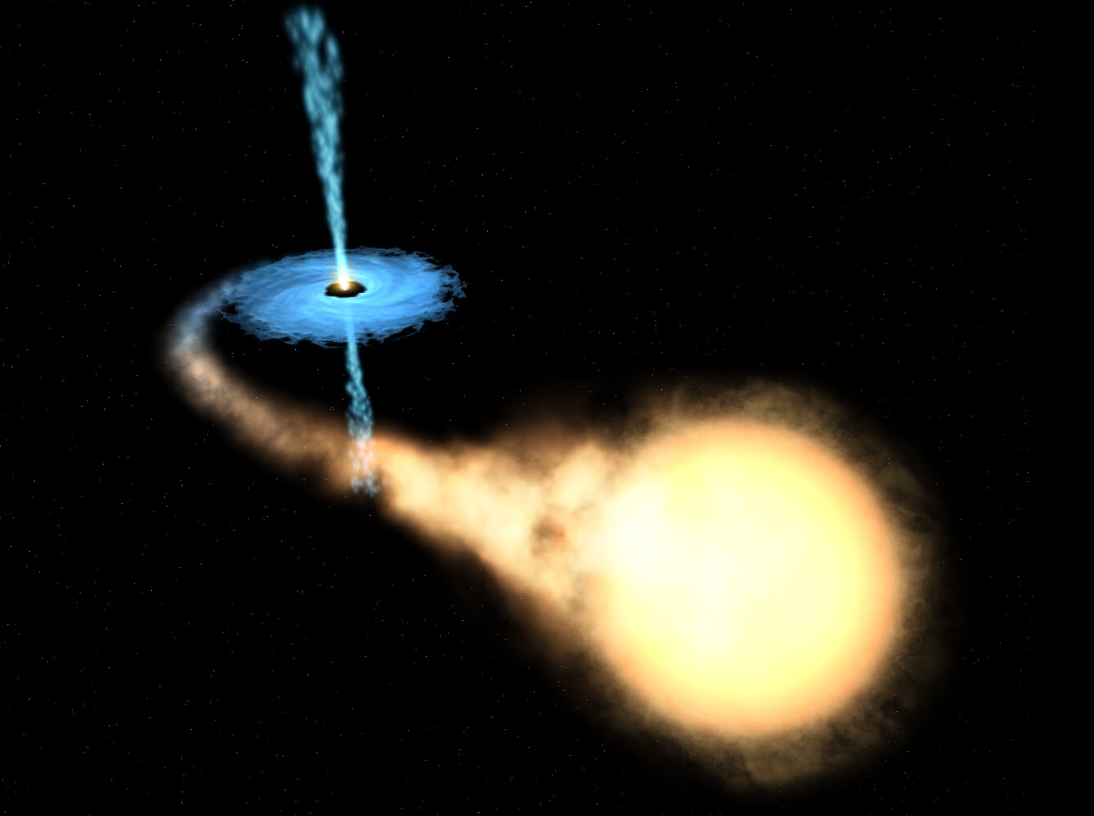
Phd Thesis
Site: Merate (LC)
Duration
3 years
Tutor
Sara Motta
Contact
sara.motta AT inaf.it
Description
Accreting X-ray binaries are binary systems in which a compact object, either a neutron star or a black hole, removes matter from its companion star due to the strong gravitational field. The path of gas from the inner Lagrangian point of the binary system down to the surface of the neutron star or the horizon of the black hole is complex. The angular momentum brings matter into orbit around the compact object and an accretion disk is formed, with the gas slowly spiralling in. The physics and structure of the accretion flow is very complex and far from being understood. In the inner regions, a few gravitational radii from the central object, where the gravitational field is stronger, the gas is hot and emits X-rays.
The X-ray emission has a complex spectrum that clearly originates from more than one physical components and varies considerably with the sources changing state, indicating that these components change with time. Some of these changes are rapid, as fast as minutes.
An important characteristic of this emission is its ast variability, on time scales well below a second. The complex variability observed constitues a crucial probe of the accreting flow, as it yields in principle unambiguous measurements that must be associated with important parameters of the flow.
Moreover, the observed variability in most source states is strong, with an integrated fractional rms that can be as high as 40% and a marked energy dependence. This means that failure to keep variability into account leads to the accumulation of average energy spectra that give at best average values to be interpreted.
Moreover, additional interest in time variability lies in the possibility of using it as a probe not only of accretion, but also of the strongly curved space-time a few gravitational radii from a compact object.
Models exist both for the identification of the characteristic time scales observed and for the emission process that gives rise to the variability, but their development and application are only in the early stages.
The main aim of this thesis is to understand the physical nature of the characteristic frequencies of variability and the emission processes that give rise to the variability.
The PhD candidate will work locally with Dr.ssa Sara Motta, who have access to a large set of data and to dedicated software for the analysis, but there will also be close collaboration with scientists from other institutes, both within INAF and outside. In particular, strong collaborations are in place with the University of Groningen in the Netherlands, the University of Southampton in the UK and the Inter-University Centre for Astronomy and Astrophysics in India.
The PhD candidate will work on the analysis and interpretation of data from a number of currently active X-ray missions (NICER, Swift, XMM-Newton, NuSTAR), including some for which special collaborations exist (India’s Astrosat and China’s HXMT). In addition, data from the archive of the RossiXTE satellite will be used.
The work will involve both timing analysis with in-house software and spectral analysis with standard tools. The analysis of variability components, both noise and Quasi-Periodic Oscillations, will be performed with both standard tools and advanced techniques and the results will be interpreted in the frwamework of theorical models.
The PhD candidat will be involved in proposals for new observations and will lead at least three publications during the project.
[Crediti immagine: ESA/HUBBLE]
